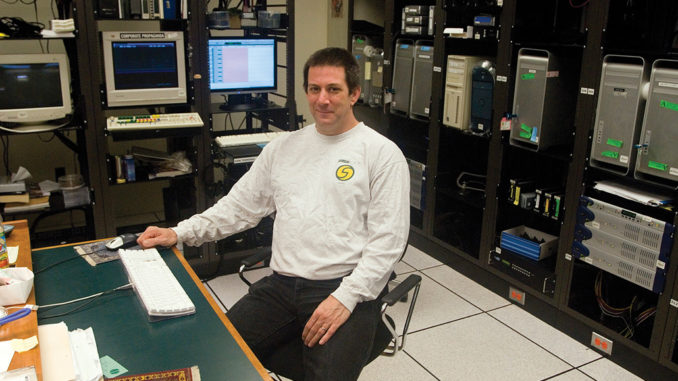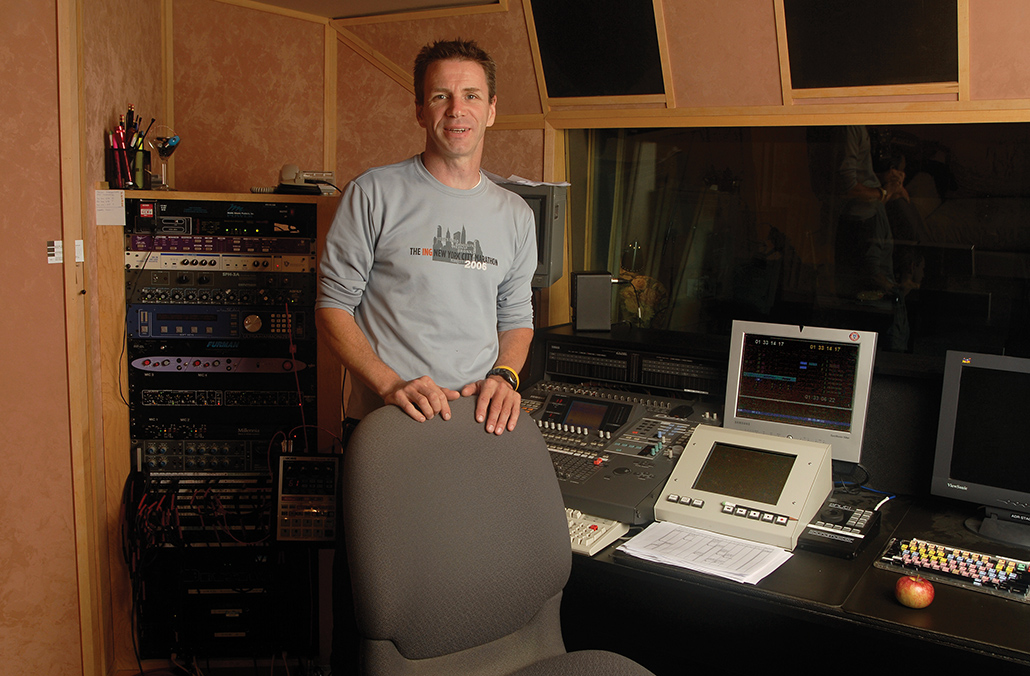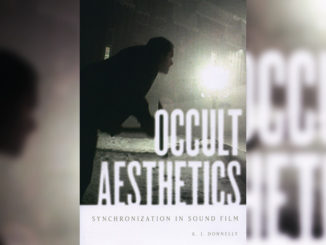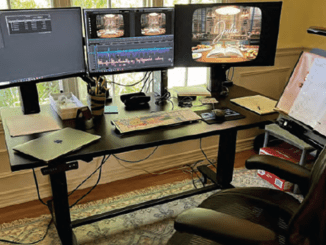
by Michael Kunkes
They are called, in old-style parlance, the “back room” or “ER” (equipment room) jobs–– machine room techs, equipment room techs, sound service personnel, assistant sound editors, recordists, mix techs, ADR mixers, assistant engineers and others. Under the classification “sound technicians,” they form the Editors Guild’s largest grab-bag category.
Though their jobs run the gamut from low-tech (including sound readers, one of the last pure film jobs in audio post) to the highest levels of digital file management, they all have certain attributes in common: an ability to step into a variety of situations, troubleshoot, solve problems and interface with any number of departments––all in service of keeping things running smoothly. As such, they are diverse, professional and indispensable.
That fluidity might be best illustrated in the insular, vibrant New York audio post scene. In the legendary Brill Building on Broadway, Sound One’s Keith Culbertson, a 20-year industry veteran, has been by turns a sound re-recordist, re-recording engineer, sound mix assistant, one-time Local 306 projectionist and now, by classification, an equipment room tech. The title, he feels, is misleading. “I prefer to call the whole tech position in the equipment room a second engineer to the mixers,” Culbertson says. “Our job used to be one of aligning recorders and dubbers, threading film, cleaning heads, inserting tape, cleaning the drums and striping stock. Today, the job involves setup and knockdown of hardware rigs for the dialogue, music and effects departments, installing software, problem-solving and changing reels––all to create the most efficient signal flow path for the mixer’s needs.”
For emphasis, Culbertson adds, “It’s always been a job with a rather loose structure, which is good because with the advent of ProTools, a lot of jobs that were never within the bounds of the back room personnel now come into play. For example, sometimes production will send material on a disc that needs to be properly lined up. They should be handling it with an editor, but if they don’t, or an editor is not available, it gets thrown onto the engineers in the mix. It happens rarely, so we all just handle it and get the job finished. It’s all about taking what the editors are handing you and pushing it through to the mixers so they have all their material the way they want it.”

Photo by Gregory Schwartz
Culbertson, an Eastern Region Alter-nate on the Guild’s Board of Directors, gives a lot of the credit for his diversity to the tradition at Sound One. “We learn a lot through the people who are here and those who came before. “It’s a philosophy of sharing everything you know with everybody else internally.
He might be speaking for “back room” people everywhere in post when Culbertson says, “There will always be the guy who is going to take care of running, managing and helping out as far as building tech and maintaining archival material. That is why we must take the responsibility upon ourselves to stay educated and always be able to read the writing on the wall.”
Sound readers (actually more often referred to as track readers) are a small and exclusive club in the Guild and the only classification to be engaged solely in animation production. The job is simple enough, at first glance. The track reader receives a ProTools file of a voice session, which is then transferred onto 35mm mag stock on one of the few 35mm film recorders still standing today. He or she puts start marks on the film based on the sync pops and then, using a 35mm sync block (remember those?), the film is then run over the sound head while the track reader, listening through headphones, slows the film down just enough to break the sound down phonetically, frame by frame, into vowels and consonants. That breakdown is then handwritten onto 11-by-17 animation x-sheets (exposure sheets), and returned to the studio, where sheet timers assign the dialogue to pre-drawn mouth charts.
The track reader’s entries are the first notations on the x-sheets, which are created for every scene and eventually include documentation from every department on the production. Without this process, production cannot actually begin. “Because almost all 2-D animation work is farmed out to studios in China, Korea, or the Philippines, the process is critical, both for the lip assigners who assign mouth movements and for the overseas animators who speak little or no English,” explains Wilson Martinez, a Los-Angeles-based freelancer who works on shows such as The Spectacular Spider-Man for Sony Entertainment and the new Wonder Woman feature for Warner Bros.
In Burbank, 17-year veteran track reader James Harrison started his business, Sound Byte, Inc., in 2006 to do track reading, sound transfer and dialogue and animation editing, mainly for Walt Disney Television Animation. “Because there are so few of us, a successful track reader has a very serious set of qualifications,” he says. “We must have great hand-eye coordination, a very strong knowledge of the English language, great hearing and an understanding of how to read and write phonetically. Most importantly, we have to be able to do this very fast.”

Photo by John Clifford
Why has this old-fashioned, hands-on process not been replaced by a computer? Like the legend of John Henry laying railroad track faster than a steam drill, it’s been tried—and failed. “A few years ago, a French company created a program that could track read and do lip sync in one pass, and while it could break down the words, it didn’t know what to do when there was more than one person talking,” says Martinez. “That’s where the human ear can’t be beat. I can pick out people talking in a crowd, but the computer can’t. My ears and my hands are like gold to me.”
To that, Harrison adds, “It’s all about quality, and a computer just can’t match what a person can do and get the lip sync to match. Studios like Disney, Sony and Warner Bros. believe in their product and want it to look good––and that’s why they use union track readers. Unfortunately, we live in an on-demand world where quality is not important outside the majors, and some indies do employ machines to help track read because it’s cheaper.”
Just a couple of miles down Broadway from Sound One, Doug Murray, MPSE (not to be confused with supervising sound editor Douglas Murray), thrives on the diversity New York City affords, in both his personal life as a duathlete/ marathon runner and his career as a Foley and ADR mixer at New York’s Soundtrack, where he moved six years ago after nine years at Sound One and eight at Todd-AO. Murray helped build the ADR room at Soundtrack as it expanded into film and television and recently has worked as an ADR mixer and recordist on movies such as The Aviator and The Manchurian Candidate and on television shows like Sex and the City and Ugly Betty.
On most of the New York-located series Murray works on, ADR is a local affair. “All the production and looping is done here in New York, then sent back to LA for post,” he says. “The challenge for us is to get the right information from the producers and editors on the West Coast so that we know not only where a line needs to be changed, but also why. Our job is to get them everything they need.”

Photo by Gregory Schwartz
He has worked with directors such as Martin Scorsese, Jonathan Demme, Spike Lee, Brian De Palma and Jon Avnet, sometimes in person, sometimes over ISDN lines. “Many directors, especially when they shoot in New York, like to be really involved in ADR, so you really need to be sharp and on your toes,” Murray says. “We just let the actors do what they do and give their best performances, while we keep the flow moving and get the sound department the best material we can for the final.”
Though they don’t direct actors, Murray admits that sometimes, the ADR mixers can find themselves in the position of directing the director. “Sometimes, you find that your own years of experience can help younger directors understand what an actor needs to do in ADR so that it all flows better at the mix,” he explains.
Whether wrangling sound or data, the idea that sound technicians are there to help the people who create a better show crosses over to picture, especially in the science of restoration. At Warner Bros. Motion Picture Imaging in Burbank, Katie Largay bears the unprepossessing titles of DI colorist assistant and digital conform operator. Modestly put, she has day-to-day responsibility for management of in-house DI projects.
But, she says, data wrangling is not what it used to be. “I am the hands of the colorists outside the DI suite,” Largay points out. “I pull projects into the timeline for the colorists, create new data sets for color correction lists, act as an intermediate with other areas of the facility who are working off our SAN network, and provide information on data location and fixes to be done by our ‘dirt and scratch’ department,” she says. “In session, I take notes, feed information, liaison with clients and help with determining the sizing and formatting of the image for various deliverables––an ever-expanding task with digital cinema becoming so prevalent and the potential output formats always increasing in number. It’s a lot of troubleshooting and detective work.”
Largay, who holds an MA in cinematography and a BFA in painting, started in the Warner Bros. vault and worked her way up the ranks. She feels that her position, while not a pure creative job, is fertile soil for what she hopes will be her own future as a colorist. “Technologically, my job is more about project management, but I love being part of the process and each colorist I assist works differently,” she explains. “Some like to puzzle through problems and push the compositing capabilities of the Baselight; others take a ‘less is more’ approach, do a lot with a couple of color trims and let everything fall where it may. It’s great to take in all these different attitudes.”

Photo by Gregory Schwartz
Over at Todd-AO West in Santa Monica, Drew Webster also proved himself a good observer. One day when he was a runner at Ryder Sound, he overheard some engineers complaining about having to install these newfangled Digital Audio Workstations. Webster volunteered, became an assistant engineer–– and later an ADR recordist and sound recordist––and found himself caught up in the technological whirlwind that overhauled the post audio world. “We have definitely done our part to push the technology along,” he says. “I watched things go from mag to digital disk recording to online servers. And now, we are passing stuff through the air from building to building. I still find that fascinating.”
Under the tutelage of Todd-AO mixer Rick Ash, Webster was for a time an assistant re-recording mixer, even sharing a 2002 Emmy for Outstanding Single Camera Sound Mixing for a Miniseries or Movie for Live from Baghdad. Though he has ambitions to become a full re-recording mixer, he loves the challenges of his position. “Every mixer has his own way of doing things,” Webster says. “When I work with Gary Summers, I have to configure the Euphonix console [through moving modules around and I/O] to look like a Neve DFC, because that’s what he’s used to; then I’ll go work with Scott Millan and bring the console back to our native Euphonix setup.”
According to Webster, each mixer has his own chains, buses and reverbs. “I build all that for them so all they have to do is come in, sit down and mix. The challenges of making these things happen are the best part of this job.”
As with Largay, much of Webster’s job centers around media management—reviewing incoming projects, making sure sessions have the right output, managing pre-dubs and making sure that deliverable requirements are met––all while managing multiple shows in various stages of completion. “I have to have the right files and versions all the time, as well as make sure that sessions get back to editorial when it’s time to conform sound to new picture,” Webster explains.
Todd-AO tends to run a little leaner than the majors in terms of engineering staff, the philosophy being to staff a few chief engineer-quality people, along with talents such as Webster who have their eyes on being full-fledged mixers or engineers themselves.
“We are the first line of defense on the stage, as Scott Millan likes to say,” Webster reveals. “I don’t fix things if they are broken, but my job is all about troubleshooting and assessing situations. It’s not truly engineering, but it definitely straddles the line. I know my opportunity will come up; I’m just waiting for some of these guys here to retire!”






